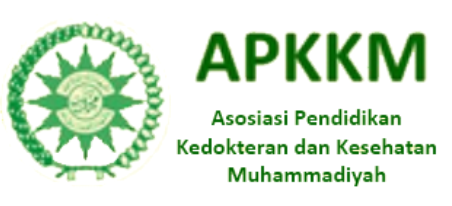Patogenesis Batu Empedu
Abstract
Gallstones are collections of cholesterol, bile pigment or a combination of the two,which are formed in the gallbladder or within the bile ducts. Cholesterol stones primarilycomposed ofcholesterol, while pigmented stones are primarily composed ofbiliru bin.
Gallstones formed in the biliary system can cause blockage of the bile ducts andsysmptoms such as abdominal pain, nausea and vomiting, and gallstones can causeinflammation of pancreas (pancreatitis), acute cholecystitis and choledocholithiasis. Riskfactors for developing cholesterol gallstones are female gender, older age, genetic, obesity,high cholesterol level, treatment with estrogen containing medications and liver disease.
Gallstones that are not causing symptoms generally do not cause problem and donot require further evaluation. Gallstones are diagnosed by physical examination(murphy's sign), laboratory measurement (ALT, AST, alkaline phosphatase and bilirubin)and radiology procedures abdominal plain x-rays, Ultrasonography, Computedtomography (CT) scan, Magnetic resonance cholangiography (MRCP), Endoscopicultrasound (EUS), and Biliary. scintigrapy.
The treatment for gallstones that obstruct the common bile duct is endoscopicretrograde cholangiopancreatography (ERCP) or surgery.
Keywords
References
Beckingham I.J. ABC of diseases ofliver, pancreas and biliary system:Gallsone disease. BMJ 2001;9:56-9.
Tait N, Little J.M. Fortnighly Review:The treatment of gall stones. BMJ1995;311:99-105.
Apstein M.D. Gallstones. In:Lawrence J. Brandt, editor. Clinicalpractice of Gastroenterology.Philadelphia: Churchill Livingstone,1999: 1035-44.
Greenberger N.J., Paumgartner G.Disease of the gallbladder and bileducts. Dalam: Dennis L.K., AnthonyS.F., Dan L.L., Eugene B., StephenL.H., J.Larry J., editors. Harrison'sPrinciples of Internal Medicine. 16th ed.New York: McGraw-Hill, 2005: 1880-91.
Allen J. Cholelithiasis. (diakses 26April 2006). http://www.emedicine.com/
Johnston D.E., Kaplan M.M.Pathogenesis and treatment ofgallstones. N Engl J Med1993;328:412-21.
Shaffer E.A. The Biliary system.(diakses 26 April 2006).
http://www.gastroresource.com/GITtextbook/en/chapter14/Default.htm
Friedman L.S. Liver, biliary tract &pancreas. In: Lawrence M.T., StephenJ.McPhee., Maxine A.P., editors. Current Medical Diagnosis &Treatment. 2005: 629-78.
Sherlock S., Dooley J. Gallstones andinflammatory gallbladder diseases.Dalam: Diseases of the liver and biliarysystem. 11th ed. Blackwell Publishing2002.h. 597-623.
Colizzo F.P., Farraye F.A.Cholelithiasis and Cholecystitis.Dalam: Lawrence J. Brandt, editor.Clinical practice of Gastroenterology.Philadelphia: Churchill Livingstone,1999: 1046-55.
Guyton AC., Hall JE. Secretoryfunction of the alimentary tract. Dalam:Texbook of medical physiology 10th ed.Philadelphia: WB Saunders Company2000. h. 738-53.
Wolkoff A.W. Bile formation andexcretion. Dalam: Lawrence J. Brandt,editor. Clinical practice ofGastroenterology. Philadelphia:Churchill Livingstone, 1999: 792-5.
King M.W. Bile acids synthesis andutilization. (diakses 21 Maret 2006)Tersediadari:http://web.indstate.edu/thcme/mwking/cholesterol.html
Tolman K.G., Rej R. Liver function.Dalam: Carl A.B., Edward R.A.,editors. Tietz Texbook of ClinicalChemistry 3" ed. Philadelphia:Saunders, 1999:1125-72.
Kim I.S., Myung S., Lee S.S., Lee S.K., Kim M.H. Classification and Nomenclature of gallstones revisited. Yonsei Med J 2003;44:561-70.
Somnay K., Jagannath SB., Choti M., Singh V., Norwitz L., Kalloo AN. Gallstone disease. (diakses 16 September 2006). Tersedia dari: http://hopkinsgi.nts.jhu.edu/pages/latin/templates/in dex.cfm.
Ko C.W., Sekijima J.H., Lee S.P. Biliary sludge. Ann of Intern Med. 1999;130:301-11.Crawford J.M. The liver and the Billiary tract. In: Robbibs Basic Pathology 7th ed. Fhiladelphia: Saunders, 2003: 591-633.
Ahmed A., Cheung R.S., Keeffe E.B. Management of gallstone and their complications. Am Fam Physician 2000;61:1673-80, 1687-8.
van Erpecum K.J., van BergeHenegouwen. Gallstones: an intestinal disease? BMJ 1999; 44:435-8.
Vogt D.P. Gallbladder disese: an update on diagnosis and treatment. Cleveland Clinic Journal of Medicine 2002;69:977-84.
Bellows C.F., Berger D.H. Management of gallstones. The American Family Physician 2005;72:637-42.
Strasinger SK., Di Lorenzo MJ. Chemical examination of urine. Dalam: Urinalysis and body fluids 4th ed. Philadelphia: F.A Davis Company. 2001.h. 43-66.
Strasinger SK., Di Lorenzo MJ. Fecal analysis. Dalam: Urinalysis and body fluids 4th ed. Philadelphia: F.A Davis Company. 2001.h. 209-17.
Barbara JB., Imelda B. Basic haematological techniques. Dalam: Lewis SM., Bain BJ., Bates I. Dacie and Lewis practical haematology. 9th ed. London: Churchill Livingstone; 2001. h. 19-46.
Roche Diagnostic. AST (ASAT/GOT). Germany: Roche Diagnostic 2001.
Roche Diagnostic. ALT (ALAT/GPT). Germany: Roche Diagnostic 2001.
Roche Diagnostic. GGT. Germany: Roche Diagnostic 2001.
Roche Diagnostic. ALP. Germany: Roche Diagnostic 2001.
Miller JC. Magnetic Resonance Cholangiopancreatography (MRCP). (Diakses 15 September 2006). Radiology Rounds A Newsletter for Referring Physicians Massachusetts General Hospital Department of Radiology 2004; Vol 2.
DOI: https://doi.org/10.32502/sm.v1i1.43
Refbacks
- There are currently no refbacks.
Copyright (c) 2016 Astri Sri Widiastuty

This work is licensed under a Creative Commons Attribution-NonCommercial-ShareAlike 4.0 International License.
Syifa Medika: Jurnal Kedokteran dan Kesehatan Abstracted/Indexed by:

Syifa Medika: Jurnal Kedokteran dan Kesehatan by https://jurnal.um-palembang.ac.id/syifamedika is licensed under a Creative Commons Attribution-ShareAlike 4.0 International License.


